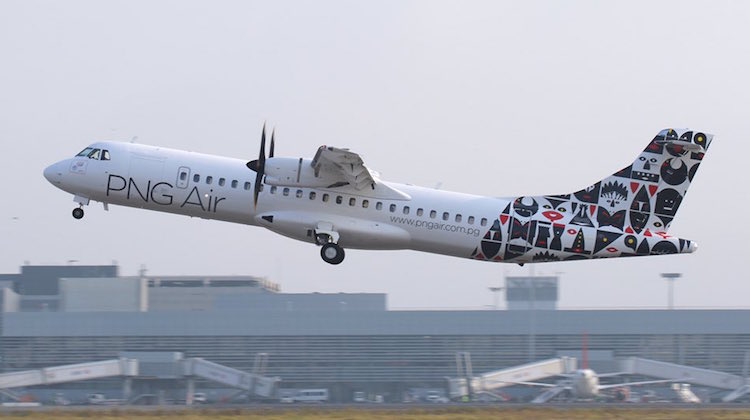
ATR head of global sales John Moore says large numbers of older aircraft in the 50-70 seat category still in service should support demand for its family of turboprops in the period ahead, particularly in Australia.
Moore noted there were about 200 regional aircraft operating in Australia currently, with about 80 per cent of those turboprops.
“If you look at the average age of these aircraft, many of them are over 20 years old,” Moore told reporters during a media briefing in Port Moresby on Wednesday.
“So over time there is going to be an opportunity to replace these aircraft. We’ve got both the 50-seat and the 70-seat models so [they are] well-suited for some of these types of markets which are reasonably thin and don’t have a lot of growth.
“It could be a market for us not only for new aircraft but probably also for second-hand aircraft as well where in some cases the utilisation and economics may not justify a new aircraft.
“We see some good future potential for this market to grow.”
Toulouse-based ATR, which is jointly owned by Airbus and Alenia Aermacchi, offers the ATR 42-600 (46-50 seats) and the ATR 72-600 (68-78 seats).
Operators of the type in the region include Virgin Australia and Air New Zealand, with the latter just announcing an order for 16 additional ATR 72-600s.
The general trend for larger capacity aircraft has raised the prospect of a larger turboprop built to carry between 90 and 100 seats at some future point.
Moore said a larger aircraft than ATR’s current 72-600 model, which Philippines-based low-cost carrier Cebu Pacific configures with 78 seats in a high-density layout, was something the manufacturer had looked at.
However, he said the focus currently was on optimising the efficiencies and performance of the current ATR 72-600 and smaller ATR 42-600 models.
“At this time it is not our focus and not our priority,” Moore said.
“The 90-seater is kind of on the backburner. Perhaps we will look at that again in the future. It is ultimately a decision of the shareholders of ATR.”
Moore is in Port Moresby as part of a media tour of PNG Air’s newest aircraft, an ATR 72-600 capable of operating with a full passenger layout of 72 seats, or in a mixed passenger/freighter configuration.

PNG Air is the launch customer of the manufacturer’s “cargo flex” solution, with the cabin able to be converted between either layout at short notice.
Converting to a combi layout, which is usually an overnight process, increases cargo capacity by 82 per cent, from 1,700kg to 3,100kg, while the number of seats is reduced from 72 to 44.
Moore said the cargo flex product was a great solution for markets such as PNG, given it could meet the demand for both cargo and passenger travel in remote communities.
The manufacturer has booked 67 firm orders so far in 2015, Moore said, adding ATR was on track to deliver about 90 aircraft in the current year.











